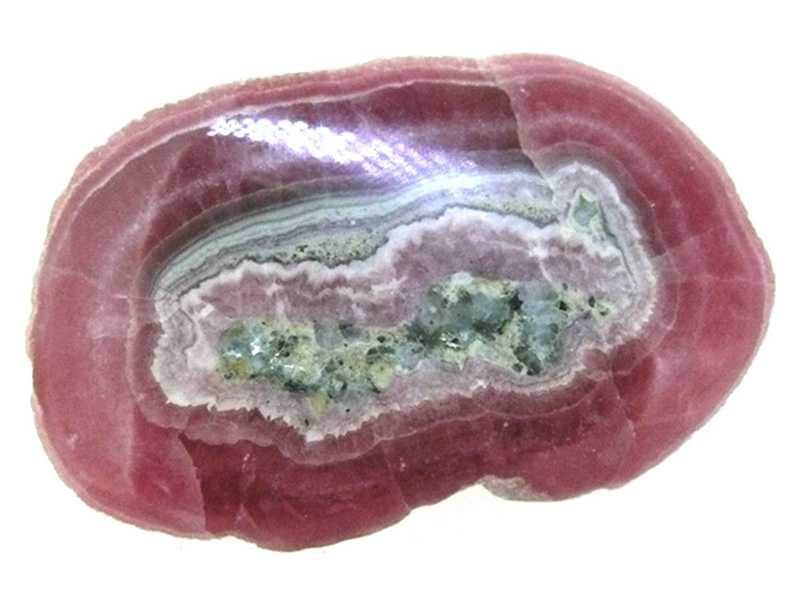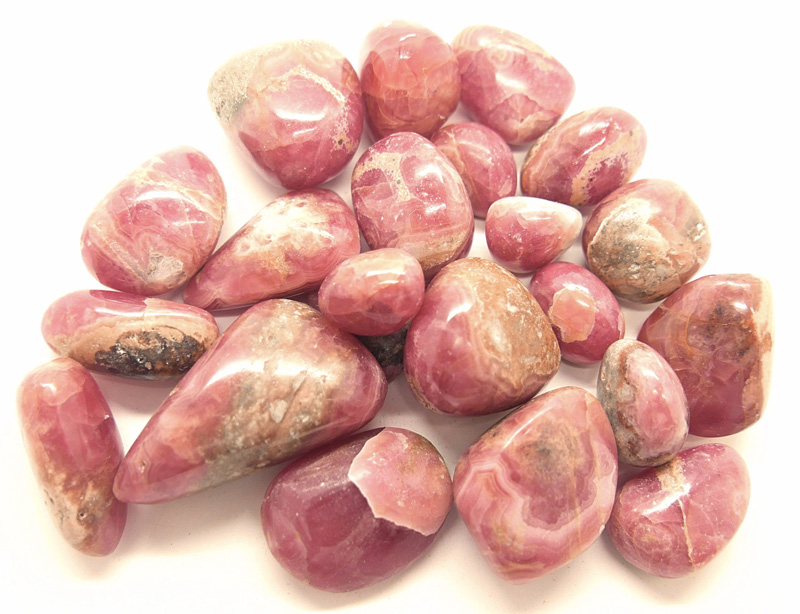

PHYSICAL PROPERTIES
- GROUP Carbonates
- COMPOSITION MnCO3
- COLOR Pink, brown or gray
- CRYSTALLINE SYSTEM Hexagonal / trigonal
- CRYSTALLINE HABIT Rhombohedral
- HARDNESS 3.5 - 4
- FRACTURE Uneven
- EXFOLIATION Perfect rhombohedral
- SHINE Vitreous to pearly
- STRIP White
- TRANSPARENCY From transparent to translucent
- SPECIFIC GRAVITY 3.0
- REFRACTIVE INDEX 1.6 - 1.8
MINERALOGICAL CHARACTERISTICS
The rhodochrosite is a manganese carbonate belonging to the group of carbonates. It normally contains calcium and iron, and sometimes also magnesium. It is usually pink, although it can also be gray, yellowish or brown. It is highly appreciated for its beautiful banded undulations of different shades. In Argentina, rhodochrosite also takes the name of "Inca rose" because it is associated with legends and myths about the Incas. Its name comes from the Greek "rhodokhros", which means "pink".
The rhodochrosite is found in hydrothermal veins, in metamorphic deposits and in sedimentary deposits of iron and manganese deposits. Rhodochrosite crystals are rhombohedral and rare. It usually appears in spherical, renicular and radial aggregates. There are also rhodochrosites with stalactitic growth and in compact, crusty form.
Deposits: Argentina, United States, South Africa, Romania, France, Gabon, Mexico, Russia and Japan.
THERAPEUTIC PROPERTIES
The rhodochrosite stimulates and balances the heart area, seeking understanding, self-esteem and courage. It is a stone that helps to harmonize the inner world through emotional release. Rhodochrosite represents selfless love and compassion. Helps activate vitality and elevate mood. At a healing level, it strengthens the heart and lungs.


